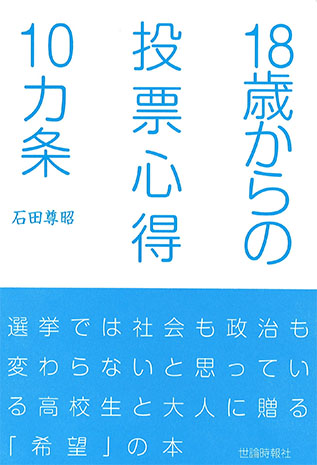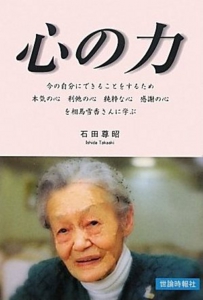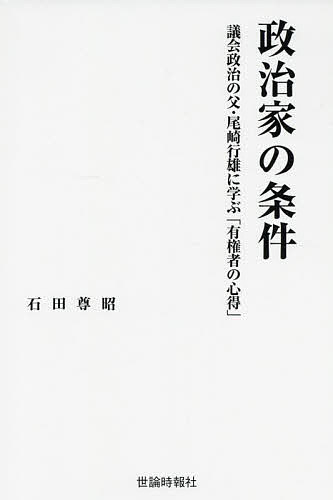By Katsuhiro Asagiri | IDN-InDepthNews Special Report
ISE | TOKYO (IDN) – When Noelle Mary Verhelst, the 67th United States Cherry Blossom Queen, paid a courtesy call on Prime Minister Shinzo Abe in Tokyo on June 4, she said in fluent Japanese: “During my trip to Ise City, I was impressed with the beauty of Japan, people’s warmhearted kindness and the legacy of Ozaki Yukio. Japan and the U.S. are good friends.”
Verhelst, who currently works as a legislative correspondent for Congressman Joe Heck (NV-3), was in the audience when Abe was invited to address a Joint Meeting of the U.S. Congress on April 29 as the first Japanese Prime Minister since WWII and appealed for further deepening of the U.S.-Japan relationship based on shared principles and ideals of democracy. Verhelst said to the Prime Minister: “I was one of audiences who were impressed with your address.”
The Prime Minister responded: “As you rightly said, the U.S. and Japan are good friends. I was deeply touched when I received a great ovation from the audience on that occasion. Cherry trees donated to Washington D.C. by Yukio Ozaki are the symbol of the U.S.-Japan friendship and I hope Cherry Blossom in spring would serve as a reminder of friendship. ”
Rows of cherry trees along Potomac River have been known as one of the foremost aesthetic landscapes in the U.S. National Cherry Blossom Festival. The Festival has been held every year since 1935 – in commemoration of the gift of 3,000 cherry trees donated to the city of Washington D.C. by Yukio Ozaki, mayor of Tokyo in 1912 – on a grand scale for several weeks starting late March, except for a temporary period of WWII. It has become a seasonal tradition that signals the dawn of spring in the U.S. capital.

As this year marks the 100th anniversary of the gift of dogwood trees, donated to Japan by the then President William Howard Taft in reciprocity and appreciation for the cherry trees from Japan, the centennial friendship between the U.S. and Japan was once again the main focus during the festival this year including the joint issuance of commemorative stamps by United States Postal Service and Japan Post Co., Ltd.
The Cherry Blossom Princess program, including the selection of the U.S. Cherry Blossom Queen, was initiated in 1948 by the National Conference of State Societies (NCSS), which helped to re-launch the first post-World War II Cherry Blossom Festival that year with an aim to promote peaceful relations with Japan. Since then, Cherry Blossom Princesses have been selected from each state and the U.S. territories every year. The U.S. Cherry Blossom Queen is chosen by a random spin of a wheel of fortune by the Japan Ambassador in Washington D.C. at the Official Cherry Blossom Grand Ball during a National Cherry Blossom Festival.
The U.S. Cherry Blossom Queen visits Japan from late May to early June every year to further deepen the U.S.-Japan friendship by paying a courtesy call on a member of the Royal family, Prime Minister, the Chairperson of the House of Representatives (also the chairperson of Ozaki Yukio Memorial Foundation), the U.S. Ambassador to Japan, and the governor of Tokyo. She also participates in events organized by local governments and non-governmental organizations.
Accompanied by Amy Anda, NCSS U.S. Cherry Blossom Queen Chaperone, Verhelst, visited Ise, the city historically associated with Yukio Ozaki at the invitation of NPO Gakudo Kofu and then proceeded to Tsu, capital city of Mie Prefecture where they paid a courtesy call on Governor Eikei Suzuki.
As the delegation arrived at Uji Yamada Station, it was warmly greeted by Gakudo Kofu members waving the U.S. flags on the platform. After a lunch in their honour, they were escorted to Ise Grand Shrine.
At the main sanctuary, the 2015 U.S. Cherry Blossom Queen prayed for further deepening of the U.S.-Japan Friendship and prosperity of both nations on behalf of the people of the U.S.
“Praying at the sanctuary filled with tranquil and seraphic air surrounded by deep woods helps me understand that this is a place where prayers for peace and prosperities have been offered for over 2000 years. The beautiful scenery (that) opens out before my eyes right now strangely matches my very image of Japan, which I used to picture in the U.S. I was told that a grandmother on my father’s side was Japanese but I even do not know where in Japan she was from as she passed away young long before I was born. However, standing here, I feel overwhelmed with gratitude as I feel her spirit and those of so many people who led me here as an emissary of the U.S.-Japan friendship,” Verhelst told IDN.
Recalling a dogwood tree she had earlier stopped by on her way to the main sanctuary, which was planted by the U.S. Ambassador Caroline Kennedy, Verhelst said, “It was one of 3,000 dogwood trees gifted by President Barack Obama in commemoration of the 100 anniversary of the gift of cherry trees by Yukio Ozaki. Ambassador Kennedy at the tree-planting ceremony said that the U.S.-Japan Alliance is a living partnership that needs continued stewardship and care and that it falls upon each generation to tend and renew the commitment to peace. She then said that it is our turn. I firmly believe that it is our turn to succeed this responsibility for peace.”
After paying a courtesy call on Kenichi Suzuki, Mayor of Ise, the delegation participated in a cultural program at Kogakukan University. After the cultural program, the group was welcomed at Ozaki Gakudo Memorial Hall, where a tree-planting ceremony for a new dogwood tree was held in Verhelst’s honor. The tree was one of 3,000 given to Japan by President Barack Obama. Entering the memorial hall, the delegation was greeted by hundreds of water paintings of cherry blossom drawn by children of Ise, which filled walls of the building.
Ozaki Gakudo Memorial Hall annually organizes cherry blossom painting competition to honor the U.S.-Japan friendship. “We have invited successive U.S. Cherry Blossom Queens who visited the city of Ise to plant either Cherry trees or Dogwood trees with credit to each queen in our garden. These trees have been and will be cared eternally by people of Ise as the symbol of the U.S.-Japan friendship associated with Yukio Ozaki. Here, you will always be received as a U.S. Cherry Blossom Queen and we look forward to all successive Queens to come back here to see the growth of their trees.” said Kenzo Okumoto, curator of Ozaki Gakudo Memorial Hall.
After the tree-planting ceremony, Verhelst visited the exhibition hall. According to her, here she learned of a strong bond between Ozaki and people of Ise who kept sending Ozaki as their representative with their wishes for the U.S.-Japan friendship and peace to the Japanese parliament for 63 consecutive years and realized a new and important role of the U.S. Cherry Blossom Queen.
“Through my visit to Ise, I feel honored to be exposed to precious feelings of so many people who have supported the U.S.-Japan friendship and peace behind the century long friendship exchange between cherry trees and dogwood trees and this experience has prompted me to get more interested in learning about Yukio Ozaki who made such a significant mark here,” Verhelst told IDN.
Yukio Ozaki and the people of Ise
Yukio Ozaki came to mainstream as an activist when the Japanese society, after putting an end to feudalism through Meiji Restoration in 1868, was groping for a new political form as a modern nation. Convinced that parliamentary democracy should constitute the bedrock of new Japan, Ozaki launched a democratic movement calling on the Meiji government to establish a constitution based on the British model and to open an elected national assembly (Diet) during 1880s.
When the first general election for the lower house of the Diet was held in 1890, Ozaki ran from a constituency of Ujiyamada City (present Ise city) and relentlessly pursued constructive discussions at the Diet to allow democratic principles and ideals to take root in the Japanese society. Ozaki came to be known overseas as well during the Taisho Democracy period in the 1920s when disarmament was pursued and cooperative diplomatic stance was adopted towards democratic nations such as the U.S. and Britain.
During 1930s, as an independent politician, he criticized the growing influence of the Japanese military and advocated the right of women to vote. During the WWII, Ozaki was often arrested and imprisoned. Assassins threatened him for his criticism of military adventurism and war with the U.S. Despite all pressures from authorities not to do so, people in Ise continued to send Ozaki back to the Diet.
“Having grown up with a culture of praying for peace and prosperity at Ise Grand Shrine at the heart of their daily lives, people in Ise placed their hope in Ozaki who pursued the cause of parliamentary democracy and the U.S.-Japan friendship based on democratic principles with relentless courage. And their love and support for Ozaki did not change even during the darkest period of military dictatorship.” said Takako Doi, President of Gakudo Kofu.
Anda, who is also a director of the U.S. Cherry Blossom Princess Program, said in an interview with IDN: “The U.S. Cherry Blossom Princess Program is tasked to empower young women and develop their potential while promoting the U.S.-Japan friendship. In the U.S, Ozaki has been known as the person who donated cherry trees to the city of Washington D.C. but I am pleased that my visit to Ise this time gave me an opportunity to learn more about his life including the fact that he carried through his belief in democratic principles and the friendship with the U.S. even during the darkest days of the U.S.-Japan relations and was ahead of his time in advocating for women’s suffrage in those days.”
Among ardent supporters of Ozaki in Ise was Kokichi Mikimoto, founder of the Mikimoto Pearl Company, credited with creating the first cultured pearl. Mikimoto donated the ceremonial Pearl Crown to be placed upon a newly selected U.S. Cherry Blossom Queen during the National Cherry Blossom Festival, held annually in Washington, D.C. Noboru Shibahara, director of Mikimoto Pearl Island Co., Ltd. welcomed the delegation to the island. After viewing a pearl harvesting demonstration by Ama divers, Shibahara presented the freshly harvested pearls to the Cherry Blossom Queen and her Chaperone.
“Our founder Kokichi Mikimoto’s dream was to adorn the necks of all women around the world with pearls. He duly understood that in order to realize his dream, peace and trusted relations among nations have to exist based on democratic principles as advocated by Yukio Ozaki. Mikomoto was one of Ozaki’s most sympathetic supporters. We at Mikimoto Pearl Company will continue to play a part of popular diplomacy in cooperation with organizations and groups concerned while succeeding the wills of the two gentlemen,” Shibahara told IDN.
The people of Ise lent a helping hand to Ozaki who was in the depth of despair after WWII. Ozaki firmly declined a conferment of the order of merit and he was determined to retire from the political scene. However, ardent supporters in his constituency filed his candidacy and conducted his election campaign thus re-electing Ozaki with largest number of votes at the first national election in 1946 after women suffrage was granted.
It was then that Ozaki once again decided to dedicate the rest of his life for the recovery of democracy in Japan and for world peace. In this, he was supported by his old friends in the U.S. including the former U.S. Ambassador to Japan Joseph C. Grew who held important positions in the U.S. government.
In 1950 Ozaki, accompanied by his daughter Yukika, went to the United States at the invitation of the American Council on Japan, an advisory group of prominent Americans interested in promoting a meaningful U.S. policy toward Japan. It included among its leaders Ambassador Grew and his predecessor Ambassador William R.Castle, Jr. They were instrumental in having Ozaki speak before both Houses of Congress, appear on TV program and meet the American people to help the then hostile feelings of Americans toward Japan and to lay the foundations for amicable relations between the two countries. Ozaki served as a bridge of understanding in those critical days after the war.
Ozaki died on October 6, 1954, while praying for the recovery of Japan’s democracy and the development of the U.S.-Japan friendship. Ozaki Yukio Memorial Foundation, established by Diet members and volunteers from private sector, called for donations across the nation and The Ozaki Memorial Hall (present Memorial Hall of Constitutional Politics) and Clock Tower were built in front of the Diet in 1960 to promote the vision of the man revered as the father of Japanese parliamentary democracy and was donated to the House of Representatives.
After that Yukika Soma who succeeded Ozaki’s wishes as vice president of Ozaki Yukio Memorial Foundation dedicated herself to promote awareness campaign of democracy and peace based on Ozaki’s visions. Soma founded Association for Aid and Relief (AAR Japan) in 1979, which was awarded the Nobel Peace Prize in 1997 as a member organization of the International Campaign to Ban Landmines (ICBL).
In her later career, Soma mostly dedicated herself to the management of “Gakudo Juku”, a private academy established in 1998 together with Takaaki Ishida, Secretary General of Ozaki Yukio Memorial Foundation, to train personnel who can put into practice Ozaki’s spirit in Japanese politics in the future.
The academy has so far produced leaders who lead the next generation such as members of House of Representatives, members of House of Councilors, prefectural assembly members, city council members, mayors, and university professors.
Ishida told IDN: “I think that the U.S. Cherry Blossom Princess program and Gakudo Juku have both succeeded genes of democratic ideals that value human dignity and the U.S.-Japan Friendship transcending racial, religious, and cultural differences between two nations. Through exchange events with the U.S. Cherry Blossom Princess program in the future, Ozaki Yukio Memorial Foundation is interested in exploring the possibility of advancing exchanges between leaders from both nations who can contribute to world peace while taking into account the historical significance nurtured by numerous predecessors in both nations.”
Interestingly enough, on the day subsequent to the U.S. Cherry Blossom Queen’s courtesy visit to the Prime Minister’s office, Abe announced at Haneda international airport before departing for the Ukraine and the G-7 summit in Germany that next G-7 summit in Japan will be hosted at the city of Shima, next to Ise in Mie Prefecture.

Referring to Ise Grand Shrine near the summit venue, Abe said: “I hope world leaders will feel the rich culture and tradition and beautiful nature there.” “For people of Ise who supported Yukio Ozaki through generations beyond darkest days of WWII, being able to welcome democratic leaders of the world including the U.S. has a special significance.” said Doi. [IDN-InDepthNews – 20 June 2015]
Top photo: Noelle Mary Verhelst, the 67th United States Cherry Blossom Queen and Amy Anda, NCSS U.S. Cherry Blossom Queen Chaperone, received a big welcome from citizens of Ise, a community historically associated with Yukio Ozaki, widely revered as the father of Japan’s Parliamentary Democracy/ Photo by Katsuhiro Asagiri of IPS Japan
Second photo: At the entrance of GHQ in Tokyo, General Douglas MacArthur seeing off Yukio Ozaki who stopped by his office on his way to Washinton DC in May 1950/ Ozaki Yukio Memorial Foundation
Bottom photo: Ozaki Yukio (Center) with his son Yukiteru(Right) and daughter Yukika (Left) visiting cherry trees by Tidal Basin Washington D.C. in June 1950/ Ozaki Yukio Memorial Foundation














